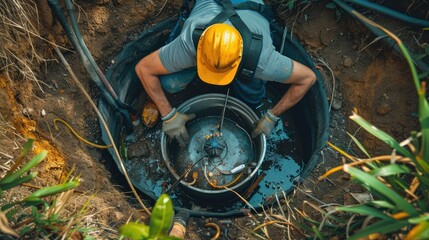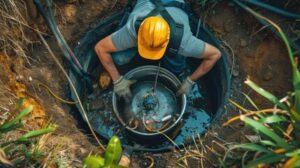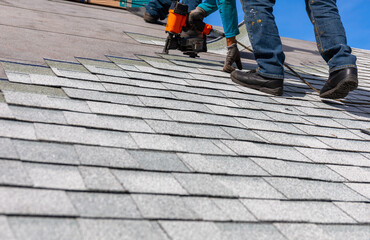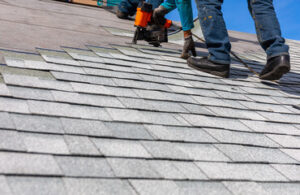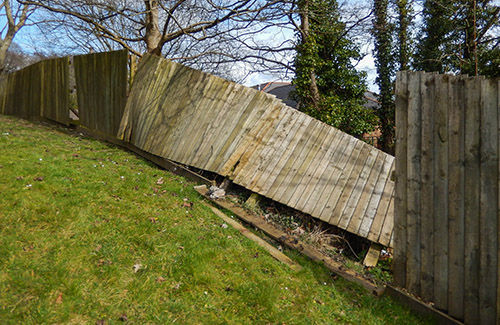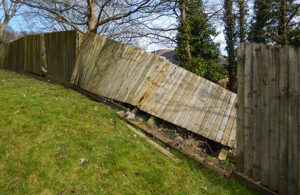Cabinet refinishing is ideal for homeowners who want to give their cabinets a facelift without the cost and mess of a full replacement. This process preserves craftsmanship while giving the kitchen a fresh new look.
However, refinishing is not an option for cabinetry that’s made of laminate or thermofoil because they cannot be sanded or chemically stripped. Contact Cabinet Refinishing Sacramento for professional help.
Cabinet refinishing is an economical way to give your kitchen a fresh new look. The process involves removing the existing finish and applying a stain or paint to the cabinet doors and frames. It is a less expensive alternative to replacing the cabinets and can be completed in one day. However, it is important to understand the cost of this project before you begin. This will help you determine if it is the right choice for your home.
The cost of cabinet refinishing depends on the type of materials and the amount of work needed to complete the project. The materials you need include paint, sandpaper, masking tape and other protective gear. You may also need to buy new hinges and pulls if yours are outdated. The refinishing process can take a few days or more, depending on the condition of your cabinets and how detailed you want the work to be.
Choosing the color and sheen level of your cabinet paint will also affect the cost and length of the project. You should choose a color that complements your existing color scheme and fits the overall style of your home. The best option is to work with a professional who can help you choose the perfect color and sheen level.
Before you can start the refinishing process, you must remove all cabinet hardware and clean the surface of the cabinets with a degreaser. This will ensure that the products you use will adhere to the surfaces of the cabinet and not peel. After the cabinets are cleaned, you should sand them down to smooth the surface and remove any imperfections. This will prepare the surface for the stain and will make the job much easier for you.
It is important to choose a good cabinet paint, and you should get it from a local home improvement store. These stores often sell high-quality, low-odor paints that can last for years. You can also find quality cabinet paints at specialty paint stores that offer a wide range of colors and finishes. These stores are usually owned by experienced contractors who have tried and tested various products, and they can provide reliable advice about what works and what doesn’t.
Time
Cabinet refinishing is a cost-efficient way to give your kitchen a brand-new look. It can also help restore your cabinets to their original condition and make them last longer than they would if you were to replace them. Refinishing also saves you the expense and time of removing and installing new appliances, plumbing, or electrical wiring.
The best option for you depends on your goals and the condition of your cabinets. Cabinet refinishing transforms existing cabinetry by stripping the old finish, cleaning, and repainting. It can be focused on cabinet doors, or it can include the entire cabinet box. Refinishing can be done in a day, and it’s usually less expensive than replacing your cabinets.
However, this method doesn’t offer the same transformation as refacing or replacement. It is best suited for wood cabinets that have solid materials on them. It doesn’t work for laminate or thermofoil, which cannot be sanded. It’s important to choose the right stain color for your cabinetry, and it’s a good idea to apply multiple coats.
It’s also necessary to repair any nicks, scratches, or holes in the wood before painting. This will ensure a quality paint job and reduce the likelihood of flaking or peeling. Kitchen environments are filled with moisture and grease on a regular basis, which can be damaging to most paint products. Even the best paint jobs won’t last as long as a properly prepared cabinet.
Refinishing or painting is a great choice for those who want to maintain the style of their kitchen, but need a more modern look. It’s also a good option for historic preservation or as a temporary solution to a major renovation.
NHance’s cabinet refinishing process is more than just paint; we offer a variety of finishes that are applied by hand for a one-of-a-kind look. Our Color Shift service, for example, applies several coats of paint to the wooden surfaces of your cabinets, shifting the overall color to a darker hue.
Whether you choose refinishing or refacing, NU-Look can help you create the kitchen of your dreams. We’ll work with you to find the perfect colors and materials for your cabinetry, and our experts will ensure a high-quality installation. Contact us today to get started!
Materials
Refinishing cabinets is a cost-effective option that can transform the look of your kitchen or bath. It also offers the flexibility to choose any color or style, making it a more attractive choice than replacing them entirely. Refinishing is also environmentally conscious, since it avoids waste by using existing materials. It also saves on labor and energy costs, compared to new cabinet installation.
The process of refinishing cabinets involves removing the doors and drawer fronts, cleaning the surfaces, and applying a new finish. It is important to thoroughly clean the surfaces of the cabinets to remove grease and grime, which can hinder paint adhesion. This can be done by wiping down the surfaces with a mixture of trisodium phosphate and water. After the surface is cleaned, it must be sanded to create a smooth canvas for painting. This step is essential to ensure that the new finish will last. Depending on the condition of the cabinets, you may need to use coarse or fine-grit sandpaper. Once the sanding is complete, it is crucial to wipe down the surfaces with a cloth to remove any remaining dust and debris.
After the sanding and cleaning are completed, it is time to apply the primer and then the paint. There are many different types of paints available, including oil-based and water-based options. It is important to select high-quality paints that are specifically designed for cabinetry. These types of paints contain additives that help enhance adhesion and durability, making them ideal for surfaces that endure daily wear and tear. It is also a good idea to choose a durable sealant or topcoat, which will provide an extra layer of protection and shine.
It is a good idea to mask off any areas that you do not want to paint, using tape and plastic or paper. This will prevent unwanted splatters from damaging adjoining surfaces. It is also important to use a mask when working with chemicals, as these can be toxic. It is also a good idea to use a fan or open windows to allow the area to dry properly. The weather can have a significant impact on the drying time, so it is best to do this project during the spring or fall when humidity levels are moderate.
Appearance
Cabinet refinishing gives your cabinets a fresh new look without the cost and time commitment of a total replacement. You can choose from a variety of colors and finishes to match your kitchen’s style. Whether you choose to stain or paint, a new coat of protective sealant will protect your cabinets from future wear and tear and maintain their beauty for years to come.
The duration of the project depends on a number of factors. First, the type of finish desired will determine how long the project takes. If you’re going for a basic paint job, the process will take less time than if you’re changing to a stain. Also, the type of cabinet material will affect the amount of prep work and drying times required.
To prepare your cabinets for painting, they must be cleaned thoroughly and sanded to ensure a smooth surface. The sanding process can take 2-4 hours and requires at least 24 hours to dry. Once the surfaces are clean and sanded, you can begin applying primer and the first coat of paint. After the primer has dried, you can apply a second coat and allow another 24 hours to dry.
Once the paint has fully cured, you can reattach your doors and drawer fronts to the cabinets. Remember to carefully label all hardware before removing it from the cabinets, as this will save you time during the reassembly process. Once everything is reattached, it’s important to keep in mind that your cabinets may require a few more coats of paint to achieve the ideal appearance.
In addition to sanding and priming, the refinishing process will include patching holes, cracks, and chips in your cabinets. After sanding and patching, the cabinets can be prepped for staining by using a wood filler or similar product. Once the patched areas have dried, sand again lightly and then apply stain or paint.
While cabinet refacing is an option for any type of kitchen, it is an excellent choice for older or more worn cabinets. Even the best paint jobs will start to show signs of wear and tear after a few years in a busy kitchen, so refacing is a great way to refresh your cabinets and improve their durability. However, refacing is not suitable for all types of cabinets, and you should consult with a professional to decide which method is right for your kitchen.


